The 2024 NFL season became one to forget for the Titans, who matched a franchise low with 14 losses. Despite fielding a defense that allowed the second-fewest yards in the NFL last year, the Titans permitted the third-most points to opposing offenses. The 460 points allowed was the second-most for the franchise in a single season in its 65-year history. On offense, each of the last three years saw the Titans finish a season no better than 26th in yards or points as Tennessee moved past the Ryan Tannehill era.
Last year also started a Brian Callahan HC stint; the debut proved inauspicious. Weeks after the season wrapped, the Titans quickly paired their first-time head coach with a new GM in Mike Borgonzi. The offseason strategy appeared to center around a bit of roster (and front office) purging with an emphasis on building up an improved offensive line and arsenal of weapons for No. 1 overall pick Cam Ward, who the Titans hope will become a franchise quarterback for years to come.
Trades:
- Traded LB Kenneth Murray, No. 239 to Cowboys for No. 188
 At one point a first-round prospect of a caliber to make the Chargers trade second- and third-round picks to move back into the Round 1 to draft him, Murray has since fallen from grace. As a rookie in Los Angeles, Murray led the team with 107 tackles, but in Year 2, an ankle injury derailed his progress.
At one point a first-round prospect of a caliber to make the Chargers trade second- and third-round picks to move back into the Round 1 to draft him, Murray has since fallen from grace. As a rookie in Los Angeles, Murray led the team with 107 tackles, but in Year 2, an ankle injury derailed his progress.
Murray returned to the starting lineup in 2022, but a below-average performance pushed the Chargers to decline his fifth-year option. After a contract year in which he recorded 107 tackles, again, and three sacks, Murray signed a two-year, $15.5MM deal with Tennessee and led the Titans in tackles (95) last season, adding a career-high 3.5 sacks.
The thing with Murray is, despite his leading a couple of defenses in tackles and being a full-time starter for most of his career, the defenses he’s led have ranked in the bottom third of the league. Pro Football Focus (subscription required) is especially critical of the 26-year-old. As the Titans’ leading tackler in 2024, Murray graded out as the NFL’s 82nd-best linebacker out of 84 players graded at the position.
Part of the aforementioned purge, Tennessee packaged Murray with a seventh-round pick in exchange for the sixth-round pick it would use to draft Michigan running back Kalel Mullings, saving $4.91MM of cap space in the process. The move followed the Titans making 2023 leading tackler Azeez Al-Shaair a one-and-done.
Free agency additions:
- Dan Moore Jr., T: Four years, $82MM ($50MM guaranteed)
- Cody Barton, LB: Three years, $21MM ($9MM guaranteed)
- Kevin Zeitler, G: One year, $9MM ($8.75MM guaranteed)
- Dre’Mont Jones, OLB: One year, $8.5MM ($7.99MM guaranteed)
- Tyler Lockett, WR: One year, $4MM ($3.49MM guaranteed)
- Xavier Woods, S: Two years, $8MM ($3.49MM guaranteed)
- Johnny Hekker, P: One year, $1.42MM ($1.2MM guaranteed)
- Van Jefferson, WR: One year, $1.67MM ($1.17MM guaranteed)
- Brandon Allen, QB: One year, $1.42MM ($1MM guaranteed)
- Blake Hance, G: One year, $1.32MM ($525K guaranteed)
- Jihad Ward, OLB: One year, $1.41MM ($500K guaranteed)
- Joey Slye, K: One year, $1.3MM ($25K guaranteed)
- Tim Boyle, QB: One year, $1.26MM
- Sam Mustipher, OL: One year, $1.26MM
- Brenden Jaimes, C: One year, $1.17MM
- Amani Oruwariye, CB: One year, $1.17MM
- James Proche, WR: One year, $1.17MM
- Oli Udoh, T: One year, $1.17MM
- Carlos Watkins, DE: One year, $1.17MM
There was a clear and concerted effort in free agency to improve on the offensive line. The center spot will be covered in the next section, but tackle JC Latham and left guard Peter Skoronski — the two top-performing linemen on a bad O-line last year — are the two sure returning full-time starters in 2025. 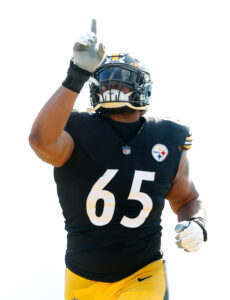
The Titans made Moore the third-highest-paid player on the team to shore up the left tackle spot after he started all four years of his rookie contract at the position in Pittsburgh. This allows Latham to return the right tackle spot, where he played both of his years as a starter at Alabama. With Latham returning to his natural position and working to improve his weight, the Titans are strengthening both tackle spots with one signing by bringing in Moore, who is now the NFL’s 10th-highest-paid LT.
Moore drew middling PFF reviews throughout his career, though he ranked 11th in ESPN’s pass block win rate metric last year, but he benefited as a young tackle option (26) and from both Ronnie Stanley and Alaric Jackson being taken off the market days before free agency. The Patriots pursued Moore as well, but the Titans — as they did with Calvin Ridley last year — eclipsed New England in a high-stakes FA battle. Moore will be asked to stop a revolving door, one that opened with Taylor Lewan‘s injury trouble, for Tennessee at LT.
Zeitler’s perennial status as one of the game’s top guards grows more and more impressive each year. Tennessee will be hoping that 35 years old is not the age that will finally bring a Zeitler decline, as he slots in opposite Skoronski. Zeitler made 16 starts with the Lions last season, running his career total to 197. Among guards, that is tied for eighth all time. With 10 starts in 2025, Zeitler can move to third on that list.
 Although only a one-time Pro Bowler, Zeitler has proven ultra-dependable. He has played at least 15 games in a season every year since 2014. The former Bengals first-rounder graded as PFF’s No. 3 overall guard during his Lions one-off, helping to create another nice market in free agency. Zeitler will earn a raise from his Detroit salary ($6MM) via this deal.
Although only a one-time Pro Bowler, Zeitler has proven ultra-dependable. He has played at least 15 games in a season every year since 2014. The former Bengals first-rounder graded as PFF’s No. 3 overall guard during his Lions one-off, helping to create another nice market in free agency. Zeitler will earn a raise from his Detroit salary ($6MM) via this deal.
Barton comes in as the plug to fill the hole left by the Murray trade. The second-leading tackler on a stifling 2024 Broncos defense, Barton’s three seasons as a starter have produced 363 tackles, five interceptions, and 12 passes defensed. In a base 3-4 defense that, more often than not, subs out the second inside linebacker with a defensive back, Barton figures to be the mainstay linebacker for Tennessee in 2025.
Barton will be looking to stick with the same team for the first time since his Seahawks rookie contract expired. Since that point, the ex-Bobby Wagner apprentice has made one-year stops in Washington and Denver. This is by far Barton’s best contract, and the $7MM-per-year deal provides some security — Tennessee’s recent penchant for ditching its highest-profile linebacker after one season aside — a 2026 roster spot will await.
Historically a strong performer in his eight years of play, Woods is coming off his worst season, per PFF. Despite leading a last-place Carolina defense in tackles (119), interceptions (three), and interception return yards (70) last year, Woods finished the season ranked 77th out of 98 players graded at the position. Both Woods and Amani Hooker have become safeties who roam in the box and slot, but Woods has more experience early in his career as a deep safety and should take that role in Tennessee.
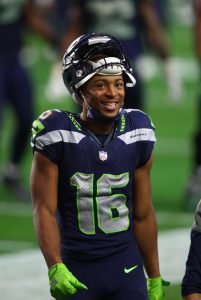 To address a defense that finished 2024 tied with the third-fewest sacks in the NFL and lost its top pass rusher, the Titans brought in Jones and Lorenzo Carter. When Carter announced his intentions to retire two months after signing, the team pivoted to picking up another veteran OLB piece in Ward. The composite of the two doesn’t nearly make up for the loss of Harold Landry, so Tennessee will need to hope Arden Key and Jeffery Simmons continue to provide solid rush support while the new additions provide support.
To address a defense that finished 2024 tied with the third-fewest sacks in the NFL and lost its top pass rusher, the Titans brought in Jones and Lorenzo Carter. When Carter announced his intentions to retire two months after signing, the team pivoted to picking up another veteran OLB piece in Ward. The composite of the two doesn’t nearly make up for the loss of Harold Landry, so Tennessee will need to hope Arden Key and Jeffery Simmons continue to provide solid rush support while the new additions provide support.
The Titans searched young and old to fill out their receiving corps with capable weapons for their rookie passer. Three years removed from his prime, Lockett brings vast veteran experience in his first year out of Seattle since he was drafted. Jefferson showed flashes early in his career with the Rams as a potential WR2 but has stumbled at two stops since. The two will compete with a slew of rookies for targets behind Ridley and the tight ends.
The Seahawks cut Lockett as they overhauled their passing attack, trading D.K. Metcalf and Geno Smith. Lockett is the second-leading receiver in Seattle history, playing 10 years with the team. Four 1,000-yard seasons are on Lockett’s resume. He remained the Seahawks’ No. 2 weapon in 2023, but as Jaxon Smith-Njigba broke through last year, Lockett slid into the No. 3 role. Lockett, 33, still compiled 600 receiving yards — after an 894-yard 2023 ended his four-season 1,000-yard streak — and will step in months after the Titans traded DeAndre Hopkins. Lockett, who helped Russell Wilson develop into a star, said Ward’s presence drew him to Nashville.
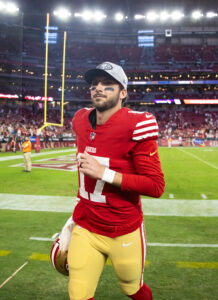 Proche joins as a free agent receiver addition, as well, but his path to the roster is likely on specials teams. He’ll be competing with incumbent returners Julius Chestnut and Jha’Quan Jackson for the opportunity. Also, on special teams, the Titans will sport two new specialists at kicker and punter.
Proche joins as a free agent receiver addition, as well, but his path to the roster is likely on specials teams. He’ll be competing with incumbent returners Julius Chestnut and Jha’Quan Jackson for the opportunity. Also, on special teams, the Titans will sport two new specialists at kicker and punter.
Jones landed in Nashville before Lockett; his Seattle tenure was certainly much shorter. Given the highest AAV ($17MM) of any free agent in Seahawks history, Jones ended up playing more as an edge rusher than expected. The ex-Broncos 3-4 defensive end gives the Titans options, having split time between the interior and edge in 2022 and ’23 before a near-full-time OLB role last season.
Jones posted between 5.5 and 6.5 sacks each year from 2020-22 in Denver, combining for 25 tackles for loss in that time. His production dipped two Seattle seasons (nine combined sacks, 12 TFLs). At 281 pounds, Jones gives the Titans an interesting option alongside Simmons or as a Key complementary piece on the edge.
Slye brings a bigger, younger leg (two 60-plus-yard field goal makes in his career) to Nashville, though he sacrifices some accuracy in his big swings. Hekker brings a bit more efficient finesse to the punting game than the Titans had last year. One of the most decorated punters in NFL history, Hekker is a four-time first-team All-Pro. The former Rams option collected a Super Bowl ring in Los Angeles and spent the past three seasons in Carolina. At 35, Hekker should still have some time left to add to his sterling resume.
Lastly, the team signed Allen and Boyle to hopefully back up Ward. At first, the two were likely competing for a QB3 spot behind Ward and Will Levis, but a season-ending shoulder surgery for Levis cleared the way for both to compete for QB2. Last year’s group of Levis, Mason Rudolph, and Trevor Siemian (practice squad) featured better second and third options, but Tennessee is hoping Ward will be the biggest improvement to the room this year. If we’re seeing Allen or Boyle for any serious snaps in 2025, something has gone terribly wrong.
Re-signings:
- Sebastian Joseph-Day, DT: One year, $6.5MM ($4.98MM guaranteed)
- Morgan Cox, LS: One year, $1.42MM ($168K guaranteed)
- Corey Levin, C: One year, $1.26MM
- James Lynch, DT: One year, $1.17MM
- Darrell Baker Jr., CB: One year, $1.1MM
- Mike Brown, S: One year, $1.1MM
- Quandre Diggs, S. Signed 8/5
After Lloyd Cushenberry tore his Achilles tendon eight weeks into last season, Daniel Brunskill filled in for the remainder of the year. Cushenberry is working his way back — though he’s still on the active/PUP list at the moment. With Brunskill following ousted GM/ex-49ers exec Ran Carthon out of town, Levin returns alongside the free agent additions — Mustipher and Jaimes — to add depth at the position. Cushenberry should start, as long as he’s ready, and he’s making good progress, but should the team need a backup starting to open the season, it’ll be Levin’s longevity and experience in Tennessee versus Mustipher’s starting experience (40 starts in three years in Chicago). 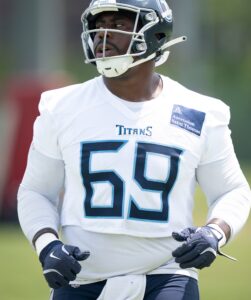
The Titans appreciated what Joseph-Day brought to a front three that most often was composed of he, Simmons, and T’Vondre Sweat. According to PFF, the three are the highest-ranked returning starters on Tennessee’s defense in 2025, so re-signing Joseph-Day helps the team secure their anchor unit up front, while re-signing Lynch adds some depth on the interior behind Sweat and Simmons.
Like Lynch, Baker and Brown return as key backups. Both defensive backs were forced into bigger roles last year with injuries to Diggs and L’Jarius Sneed, and both performed admirably in relief. Baker will likely slot into a CB3 role, if Sneed is back in the picture, and while Tennessee likely hopes it won’t have to turn to Brown as frequently in 2025, it knows it can.
One of only nine active players with 15 or more seasons of experience under his belt and sporting the sixth-most games played in the NFL of currently active players, Cox is back for another year as the Titans’ long snapper. Returning to his home state and the state of his alma mater in 2021 after 11 years in Baltimore, Cox enters his fifth year as a Titan at 39 years old.
Diggs checks in as a late-summer addition once again. After an early-August signing last year, the former Seahawks Pro Bowler is back. Diggs, 32, looks to be competing for a depth role behind Amani Hooker, Xavier Woods and third-round pick Kevin Winston Jr. Still, Diggs — back after a lengthy Lisfranc rehab — could provide a stopgap presence while Winston develops. He has made 120 career starts, and an eight-game sample in 2024 drew a No. 20 PFF placement (among safety regulars).
Notable losses:
- Chidobe Awuzie, CB (released)
- Jerome Baker, LB
- Tyler Boyd, WR
- Daniel Brunskill, C
- Nick Folk, K
- Jack Gibbens, LB (non-tendered as RFA)
- Luke Gifford, LB
- Harold Landry, OLB (released)
- Nicholas Petit-Frere, T (waived)
- Dillon Radunz, T
- Mason Rudolph, QB
- Ryan Stonehouse, P (nontendered as RFA)
- Nick Vannett, TE
- Nick Westbrook-Ikhine, WR
- Daryl Worley, S
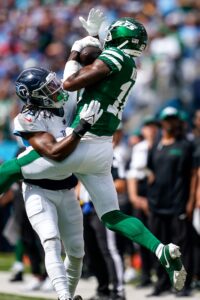 On offense, the Titans were willing to bring back Rudolph, but ultimately, he returned to a Steelers team that drafted him. Pretty much every loss on that side of the ball was pretty thoroughly addressed through the draft or free agency.
On offense, the Titans were willing to bring back Rudolph, but ultimately, he returned to a Steelers team that drafted him. Pretty much every loss on that side of the ball was pretty thoroughly addressed through the draft or free agency.
The real losses came on defense. Tennessee was willing to eat some $12.51MM in dead money to avoid paying Awuzie’s salary next year. This brought a quick exit for the former Cowboys and Bengals starter, who fetched a surprising three-year, $36MM deal in free agency last year. Awuzie, however, joined Sneed in missing extensive time in 2024. Awuzie, 30, played in just eight Titans games last season. He landed in Baltimore on a low-cost deal.
After failing to find a trade partner for Landry, the team made the move to release him and freed up $10.95MM of cap space, despite eating $13.1MM in dead money. Landry landed on his feet, rejoining Mike Vrabel — on a three-year, $43.5MM deal ($26MM guaranteed at signing) contract — in New England.
Landry, 29, had been tied to a five-year, $87.5MM Titans contract. The team moved on despite two years remaining on that deal. Landry had rebounded after missing the 2022 season with an ACL tear. As the Titans struggled for years to identify a Landry OLB wingman, they could count on solid production from their top edge rusher. Post-surgery, Landry combined for 19.5 sacks and 36 QB hits over the past two seasons.
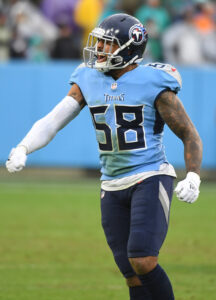 The underrated losses on defense came in the linebacking corps. While under-the-radar contributors Baker and Gifford would have required new deals, it was a bit surprising the Titans passed on simply tendering Gibbens as a restricted free agent. With Barton in tow, Gibbens’ $3.26MM tender must have become too high an ask. The $3MM-plus RFA number forced many teams to pass on tendering role players this offseason (as the Titans’ Stonehouse move, despite his stratospheric early-career punting averages, also reveals). In the end, Gibbens joined Landry and Vrabel in New England.
The underrated losses on defense came in the linebacking corps. While under-the-radar contributors Baker and Gifford would have required new deals, it was a bit surprising the Titans passed on simply tendering Gibbens as a restricted free agent. With Barton in tow, Gibbens’ $3.26MM tender must have become too high an ask. The $3MM-plus RFA number forced many teams to pass on tendering role players this offseason (as the Titans’ Stonehouse move, despite his stratospheric early-career punting averages, also reveals). In the end, Gibbens joined Landry and Vrabel in New England.
Folk made it known after the season ended that he had interest in returning to Nashville, as the 40-year-old intended to play another season. But it didn’t take long for the Titans to settle into a deal with the 28-year-old Slye, instead. After having led the league in field goal percentage in each of the past two seasons, one would’ve thought Folk would get swooped off the market fairly quickly, but the aging specialist didn’t end up landing with a team (the Jets) until training camps were already underway.
Draft:
- Round 1, No. 1: Cam Ward (QB, Miami) (signed)
- Round 2, No. 52 (from Steelers through Seahawks): Femi Oladejo (OLB, UCLA) (signed)
- Round 3: No. 82 (from Seahawks): Kevin Winston (S, Penn State) (signed)
- Round 4, No. 103: Chimere Dike (WR, Florida) (signed)
- Round 4, No. 120 (from Seahawks): Gunnar Helm (TE, Texas) (signed)
- Round 5, No. 136 (from Ravens)*: Elic Ayomanor (WR, Stanford) (signed)
- Round 5, No. 167 (from Chiefs): Jackson Slater (G, Sacramento State) (signed)
- Round 6, No. 183 (from Panthers through Ravens): Marcus Harris (CB, Cal) (signed)
- Round 6, No. 188 (from Cowboys): Kalel Mullings (RB, Michigan) (signed)
Ahead of a quarterback draft that featured a clear demarcation line after the top prospect, a Week 17 Giants win over the Colts brought major ramifications for two franchises. The Titans did their part and continued to pile up losses, finishing the regular season tied with the Browns and Giants for the worst record (3-14) in the NFL — thanks to a Patriots meaningless Week 18 win over the Bills — and held the easiest schedule strength of the three, securing the top overall pick in the 2025 draft.
For much of the draft process, four players — Ward, Colorado Heisman dynamo Travis Hunter, Penn State pass rusher Abdul Carter, and Colorado quarterback Shedeur Sanders — dominated the conversation for who could go No. 1 overall. Tennessee did its homework on all four of them. The team also toyed with the idea of upgrading the quarterback position through some attractive free agent options and trading away the top pick. Both New York teams and Cleveland showed interest in the pick, and the Giants even made a draft-day offer, but by that time, the Titans were already secure in their decision.
After meeting with the above-referenced prospects, Ward was the first asked back for a second visit. Shortly after that meeting, scheduled visits with Hunter and Sanders were cancelled, and by the time the Combine concluded, Ward was their man. He did not participate in one workout at the combine, but his team interview sold the Titans on their quarterback of the future.
As expected, Ward heard his name called first, and he became the Hurricanes’ first first-round quarterback since 1987 (Vinny Testaverde) and first No. 1 overall pick since 1991 (Russell Maryland). With another young passer coming in, there was some consideration Levis might be traded (though, they initially denied it). But when he wasn’t shopped during the draft, it was clear that he would remain to compete with Ward. The two split reps early on in offseason activities, but when Levis underwent his season-ending shoulder surgery, Ward took firm hold of the QB1 job, as he was expected to. He’ll have to continue holding off backups Allen and Boyle, but all signs point to a Week 1 start for Ward.
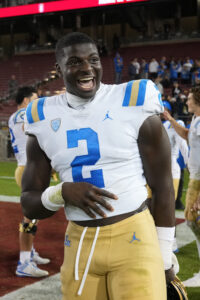 Ward’s fully guaranteed contract carries a whopping (for the rookie-scale era) $48.75MM number, by far the most for a rookie QB since the 2011 CBA curbed spending in this draft sector. The former Incarnate Word and Washington State arm carried a fast-rising profile to the draft, going from zero-star recruit to this year’s clear-cut top QB prospect. The Titans have now chosen four first-round QBs since 2006 (Vince Young, Jake Locker, Marcus Mariota, Ward). None received a second contract. Tennessee will hope Ward can follow Steve McNair in becoming a long-term option under center.
Ward’s fully guaranteed contract carries a whopping (for the rookie-scale era) $48.75MM number, by far the most for a rookie QB since the 2011 CBA curbed spending in this draft sector. The former Incarnate Word and Washington State arm carried a fast-rising profile to the draft, going from zero-star recruit to this year’s clear-cut top QB prospect. The Titans have now chosen four first-round QBs since 2006 (Vince Young, Jake Locker, Marcus Mariota, Ward). None received a second contract. Tennessee will hope Ward can follow Steve McNair in becoming a long-term option under center.
Past Ward, the Titans used the draft to stock up on positions at which they desired better depth by taking Oladejo in the second round or Winston in the third. Though not expected to be immediate starters, both defenders should factor into a defensive rotation fairly early and often, especially with Winston being cleared for training camp after a partial ACL tear in his final year at Penn State.
The other position Tennessee hit hard was the receiving corps. The team grabbed Dike in the fourth and traded up for Ayomanor in the fifth with hopes of developing them behind the veteran Ridley-Lockett-Jefferson trio. There was some thought that, with so many young pass catchers coming in, Ridley and Burks may need big years in 2025. Ridley would need to prove he’s worth the cap hits coming up on his contract, as his 2026 salary includes a partial guarantee ($3MM). Burks’ subsequent injury removed him from the team’s equation.
Other:
- Fired general manager Ran Carthon; Mike Borgonzi named replacement
- Fired assistant GM Anthony Robinson, VP of team operations Brent Akers, scouting director A.J. Highsmith, pro scouting director Brian Gardner
- Hired Dave Ziegler as assistant GM, Dan Saganey as VP of player personnel
- Hired Reggie McKenzie, promoted Scott Cohen, Jon Salge, Kevin Turks, Mike Boni in front office
- Hired John Fassel as special teams coordinator, replacing Colt Anderson
- Did not renew contracts for TEs coach Justin Outten, CBs coach Chris Harris; Luke Stocker, Tony Oden named replacements
- Hired Travis Smith as defensive run-game coordinator
- QBs coach Bo Hardegree received interest for OC positions with Bears and Raiders
- Declined Treylon Burks‘ $15.49MM fifth-year option, placed WR on IR
- Cornerback L’Jarius Sneed received ominous outlook after announcing himself back to 100% health
- Signed 16 UDFAs
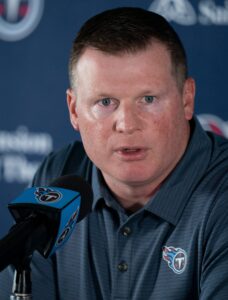 The Titans’ offseason began with major restructuring, as Carthon and a host of front office coworkers were dismissed. Carthon’s two-year GM run was certainly short, but two fourth-place AFC South finishes and the securing of the top draft pick are not signs of progress. While select draft picks (Skoronski, Latham) have shown promise, big moves such as the trade for Sneed and the free agent signings of players like wide receiver DeAndre Hopkins, tackle Andre Dillard, Awuzie, and Murray have all been only minorly impactful.
The Titans’ offseason began with major restructuring, as Carthon and a host of front office coworkers were dismissed. Carthon’s two-year GM run was certainly short, but two fourth-place AFC South finishes and the securing of the top draft pick are not signs of progress. While select draft picks (Skoronski, Latham) have shown promise, big moves such as the trade for Sneed and the free agent signings of players like wide receiver DeAndre Hopkins, tackle Andre Dillard, Awuzie, and Murray have all been only minorly impactful.
Carthon had appeared to win a power struggle with Vrabel in 2024, with Amy Adams Strunk firing the successful HC and giving her GM full roster control. This proved short-lived, and ownership again reversed course. The 2025 change increased Chad Brinker‘s standing. Despite being a Carthon assistant GM hire alongside Anthony Robinson, Brinker has climbed the ladder in the wake of Adams Strunk’s latest high-profile dismissal. He is now the Titans’ football ops president, overseeing Borgonzi.
Brinker landed in the position of finding Carthon’s replacement. After interviewing 10 candidates, Brinker conducted second interviews with six of them, and landed on a former Chiefs assistant GM. Brinker’s responsibilities didn’t end there, though. While Borgonzi would be running the draft and scouting responsibilities, Brinker was given final say over who makes the 53-man roster — an authority he lacked before this year.
 Borgonzi, who also interviewed for the Jets’ GM job, follows Brandt Tilis in leaving Kansas City for a gig that does not check in atop a team’s front office. This is technically a GM job, but Brinker’s presence provides a complication. This is the second straight year the Titans signed off on a shotgun marriage. After pairing Callahan with Carthon, Adams Strunk teams Callahan with a new GM.
Borgonzi, who also interviewed for the Jets’ GM job, follows Brandt Tilis in leaving Kansas City for a gig that does not check in atop a team’s front office. This is technically a GM job, but Brinker’s presence provides a complication. This is the second straight year the Titans signed off on a shotgun marriage. After pairing Callahan with Carthon, Adams Strunk teams Callahan with a new GM.
Borgonzi predated Andy Reid in Kansas City, arriving under Scott Pioli in 2009. The current Tennessee leader, who was on the other side of the Sneed and Hopkins trades last year, worked his way up to assistant Chiefs GM by 2021. That placed Borgonzi on the GM radar, as he helped construct a Chiefs dynasty that produced three Super Bowl titles and five appearances since 2019.
Despite a couple teams calling around for Hardegree, the coaching staff stayed mostly the same with just a few changes. The tight ends and cornerbacks groups are certainly areas of concern for the Titans this year, so having some new leadership there may be welcome. The team’s new kicker and punter will receive some strong instruction from Fassel, who spent the last two years coaching a certain up-and-coming young kicker in Dallas (Brandon Aubrey) to two All-Pro seasons.
Turning back to the players, Burks has experienced a rollercoaster offseason. With his roster spot in jeopardy after the team declined his option, the 25-year-old was making good progress in his return from an ACL tear and impressing some in the early days of training camp. Unfortunately, Burks suffered a fractured collarbone on a diving catch and, after clearing waivers, found himself right back on IR. An injury settlement may soon remove the 2022 first-rounder from that list and send him to free agency to cap what has been a wildly disappointing tenure — one that began with ultimately unrealistic expectations of replacing A.J. Brown.
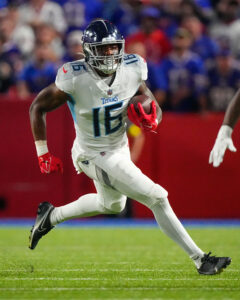 Another frustrating injury situation has been that of Sneed. After being presented with a hazy recovery timeline, Sneed announced himself as fully healthy at the end of June. There were hints of expectations he could be back in time for the season, but a recent knee cleanup surgery — unrelated to the quadriceps injury that sidelined him last year — led to an ominous report suggesting that any contributions Sneed may be able to offer in 2025 would be “a bonus.”
Another frustrating injury situation has been that of Sneed. After being presented with a hazy recovery timeline, Sneed announced himself as fully healthy at the end of June. There were hints of expectations he could be back in time for the season, but a recent knee cleanup surgery — unrelated to the quadriceps injury that sidelined him last year — led to an ominous report suggesting that any contributions Sneed may be able to offer in 2025 would be “a bonus.”
Another rookie receiver adds intrigue from the team’s 16-man undrafted free agent class. Ward’s favorite target while in Coral Gables, Xavier Restrepo, signed with the team in hopes that his chemistry with the top pick would continue in Nashville. Other notable signings from the UDFA class include Florida offensive tackle Brandon Crenshaw-Dickson ($245K guaranteed, $20K signing bonus) and a pair of defensive linemen from Auburn Isaiah Raikes ($85K guaranteed, $10K signing bonus) and Philip Blidi.
Top 10 cap charges for 2025:
- Calvin Ridley, WR: $28MM
- Jeffery Simmons, DT: $22.77MM
- L’Jarius Sneed, CB: $22.58MM
- Lloyd Cushenberry, C: $14.25MM
- Amani Hooker, S: $11.1MM
- Dan Moore Jr., T: $10.88MM
- Arden Key, OLB: $9.29MM
- Kevin Zeitler, G: $8.99MM
- Cam Ward, QB: $8.88MM
- Dre’Mont Jones, OLB: $8.5MM
After a fresh start with their rookie head coach resulted in a league-worst record, the Titans retooled around a new general manager and quarterback. The Titans can hope that, like Jayden Daniels and C.J. Stroud before him, Ward will be the next rookie passer to take his team to the playoffs in Year 1.
In reality, the focus of the season will be getting Ward comfortable with the speed of the NFL game and seeing which pieces contribute most to his success. If the defense can rebound from an uncharacteristically high-scoring season and Ward ends his rookie campaign cemented in the starting role, 2025 will have been a successful year in Nashville.

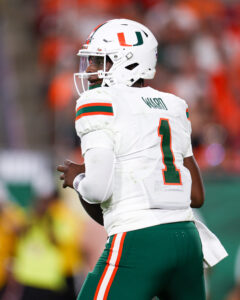
Which South division is worse, the NFC or AFC?
NFC
Solid 5 win team
Sneed needs to come back and play well if this team has any chance of winning at least 8 games.
Not sure an 8-9 season saves Callahan’s job but it should with so much roster turnover. I feel Okonkwo could have a big year with Ward throwing to him.
The Titans suffer from COS (clueless owner syndrome) so it’s hard to generate any optimism about them being a playoff contender.
The very same owner who fired her GM for trading AJ Brown after she had ok’d the deal, is also the benefactor of the single highest priced, publicly funded stadium in North American history. I’m not sure who’s more clueless- Her or the citizens of Nashville.
Yes, the taxpayers in Nashville are clueless. Noboby here even raised a fuss, while affordable housing here is a disaster. At least the old stadium was a cool colisseum structure but couldnt–or wouldnt–get the renovation it needed. With all the new people that keeps coming to the city, they will help foot the bill but that dont mean they will come to the games. Stunk wont care either way.